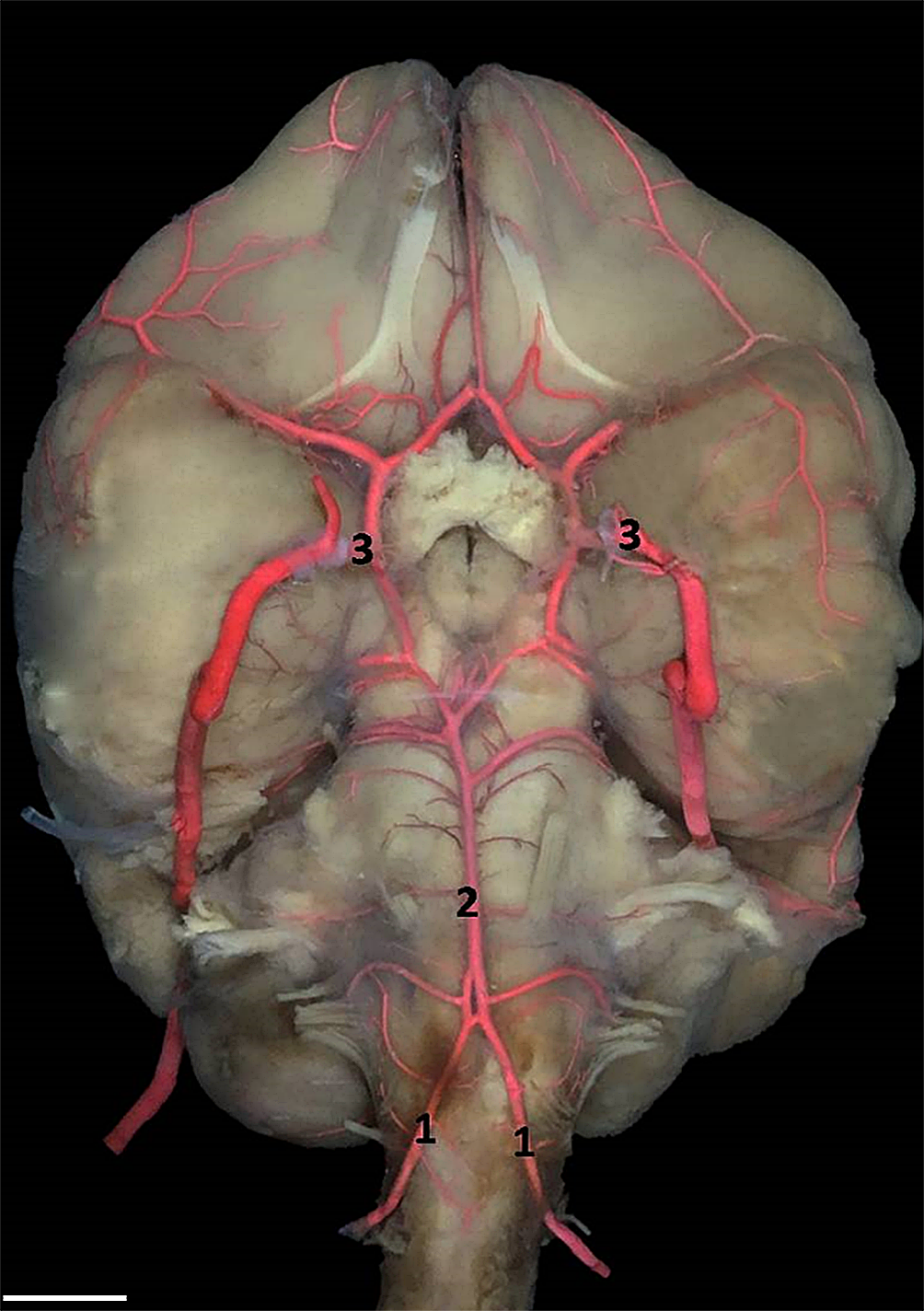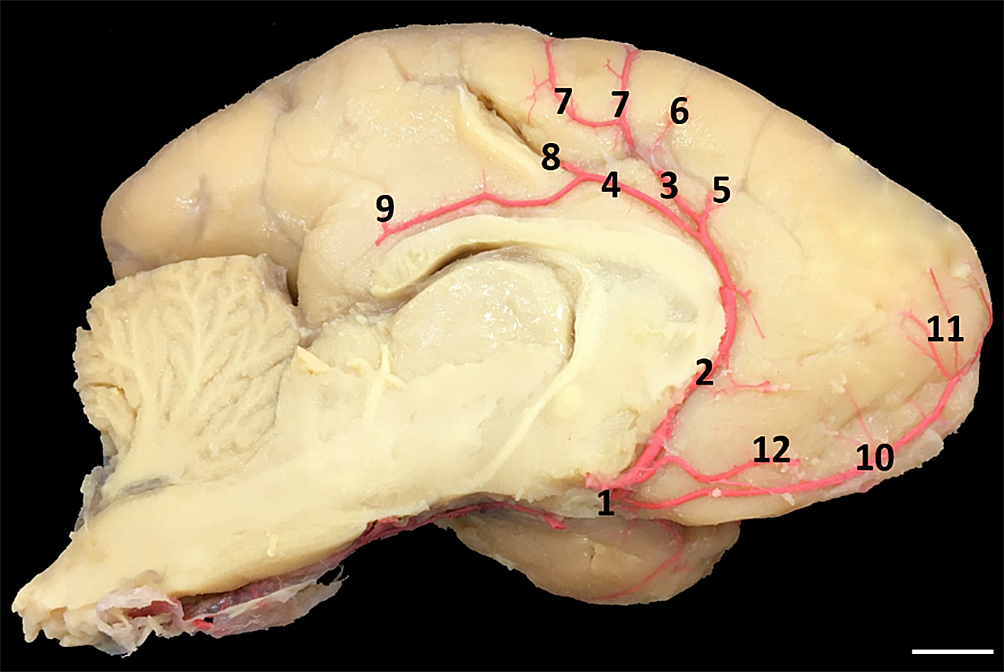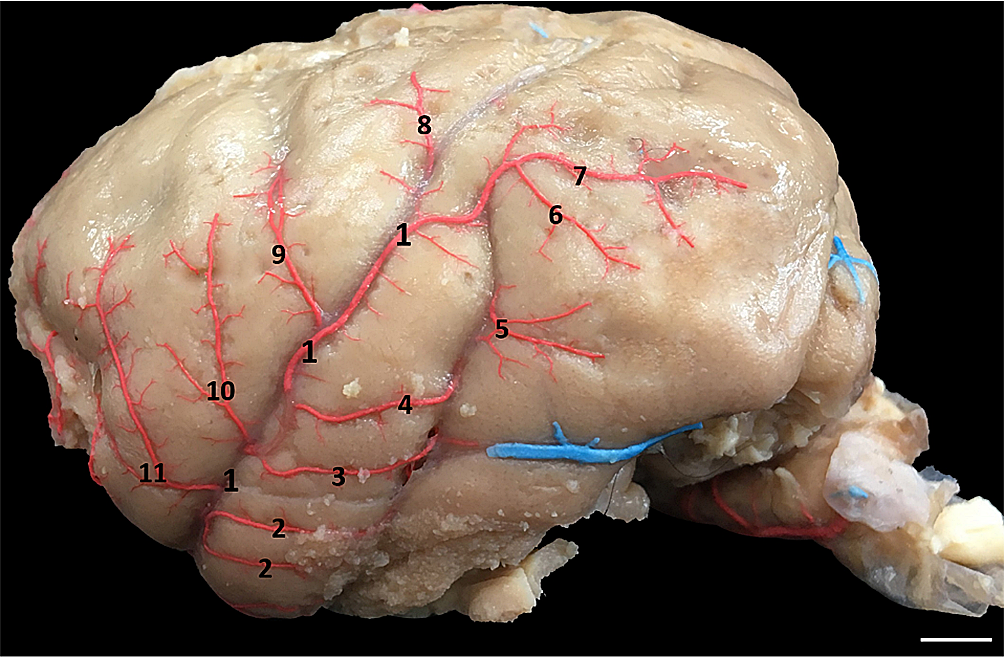ABSTRACT:
We studied the arterial circle in the brain of five specimens of the Alouatta belzebul primate. The material had the arterial system perfused (water at 40°C), injected with stained latex (Neoprene 650), fixed in aqueous formaldehyde solution (10%) and dissected for vessel verification. The arterial circle of this primate is composed of two vascular systems: the vertebra-basilar and the carotid ones, which anastomose to close the arterial circuit. In the caudal portion of the arterial circle, there are the vertebral arteries and their branches: the rostral spinal artery and the caudal inferior cerebellar artery. The anastomosis of the vertebral arteries gives rise to the basilar artery. It presented an anatomical variation at the beginning of its path, forming a double basilar artery, called arterial island. In its course, it emitted branches giving rise to the rostral inferior cerebellar artery, the pontine arteries, the rostral cerebellar arteries, the satellite rostral cerebellar arteries and its terminal branch, the caudal cerebral artery, which presented itself in two segments: the pre-communicating one and post-communicating, joining the internal carotid artery and originating the caudal communicating artery. This group of arteries and anastomoses enclose the caudal portion of the arterial circle. From the right and left internal carotid arteries begins the rostral portion of the arterial circle, which consists of the right and left rostral cerebral arteries and the right and left middle cerebral arteries. The rostral cerebral arteries anastomose into a single trunk, giving rise to the interhemispheric artery, and in A. belzebul and Sapajus libidinosus, the rostral communicating artery is absent. The interhemispheric artery goes to the midbrain region and the corpus callosum knee divides into pericalous artery and callosarginal artery, which will supply the pre and post-central regions of the cerebral hemispheres of this species, as well as other non-human and human primates. It is noted that in the first part of the left rostral cerebral artery, there is a direct inosculation between the recurrent branch of the rostral cerebral artery and left middle cerebral artery to supply the entorhinal region. This fact also occurs in Pongo spp. The middle cerebral artery travels along the lateral sulcus where it emits several superficial branches to irrigate the superior and inferior lateral cortical regions of the frontal, parietal and temporal lobes. It is not part of the arterial circle but is the terminal branch of the internal carotid artery. A. belzebul can be considered to depend on two sources of supply to the brain: the vertebra-basilar and carotid systems, contributing to the intervention of veterinarians during clinical and surgical procedures in other primates, as well as the preservation of wild animals.
INDEX TERMS:
Vascularization; Alouatta belzebul; brain base; arterial circle; neotropical primate; carotid system

 Thumbnail
Thumbnail
 Thumbnail
Thumbnail
 Thumbnail
Thumbnail
 Thumbnail
Thumbnail
 Thumbnail
Thumbnail
 Thumbnail
Thumbnail
 Thumbnail
Thumbnail






